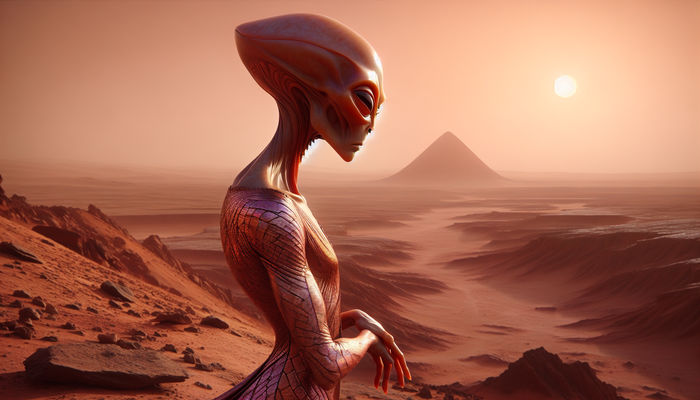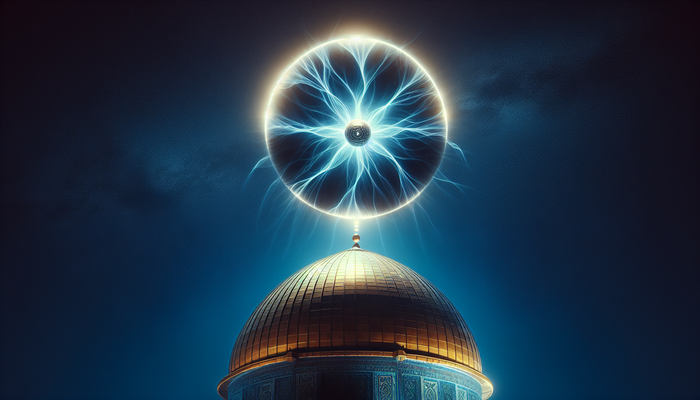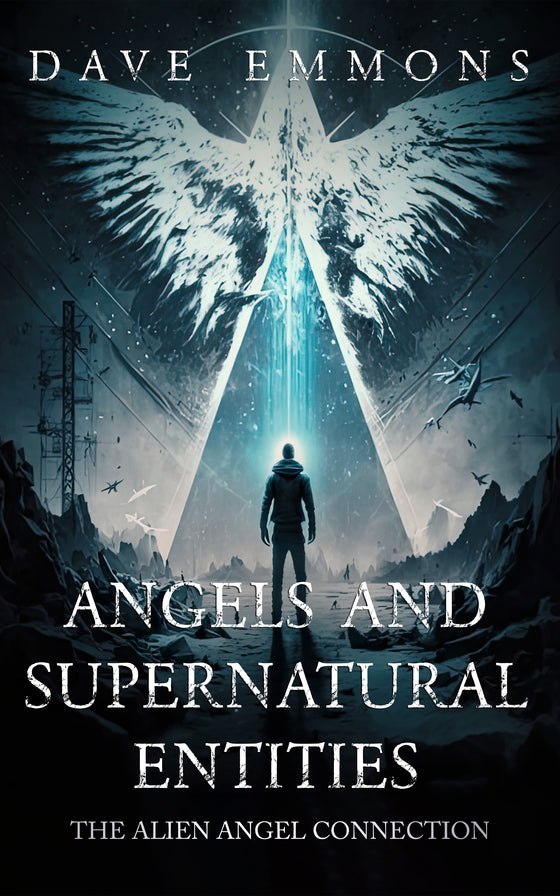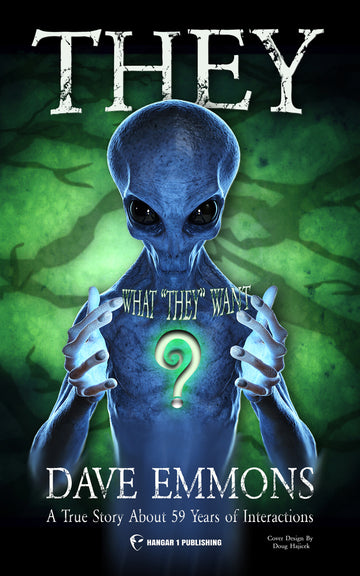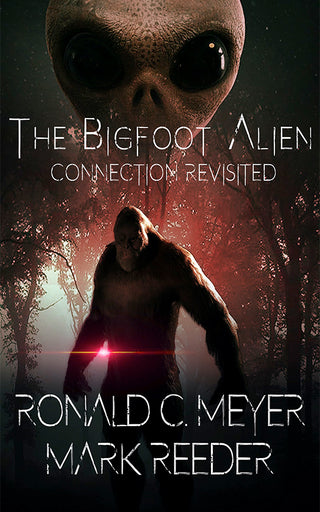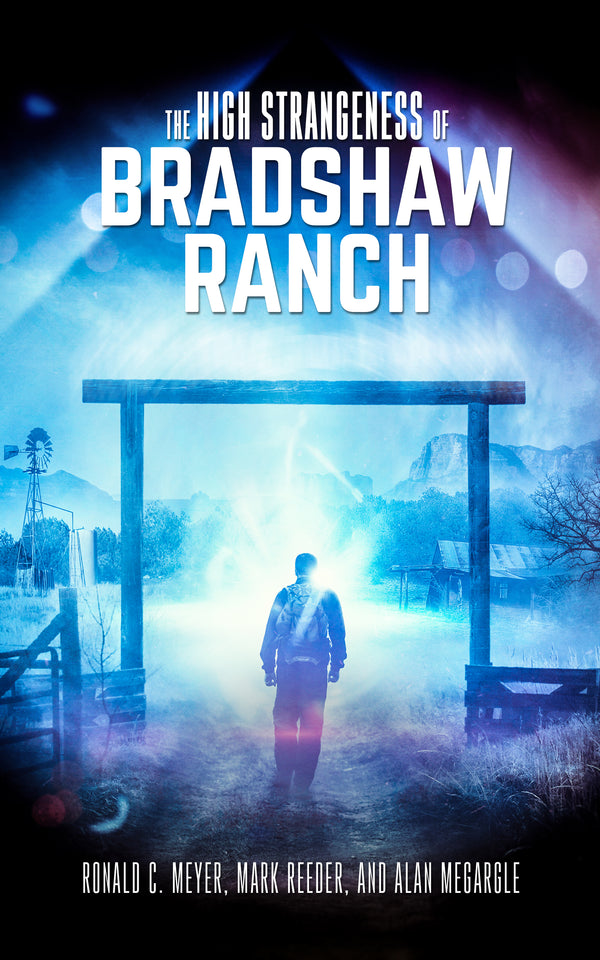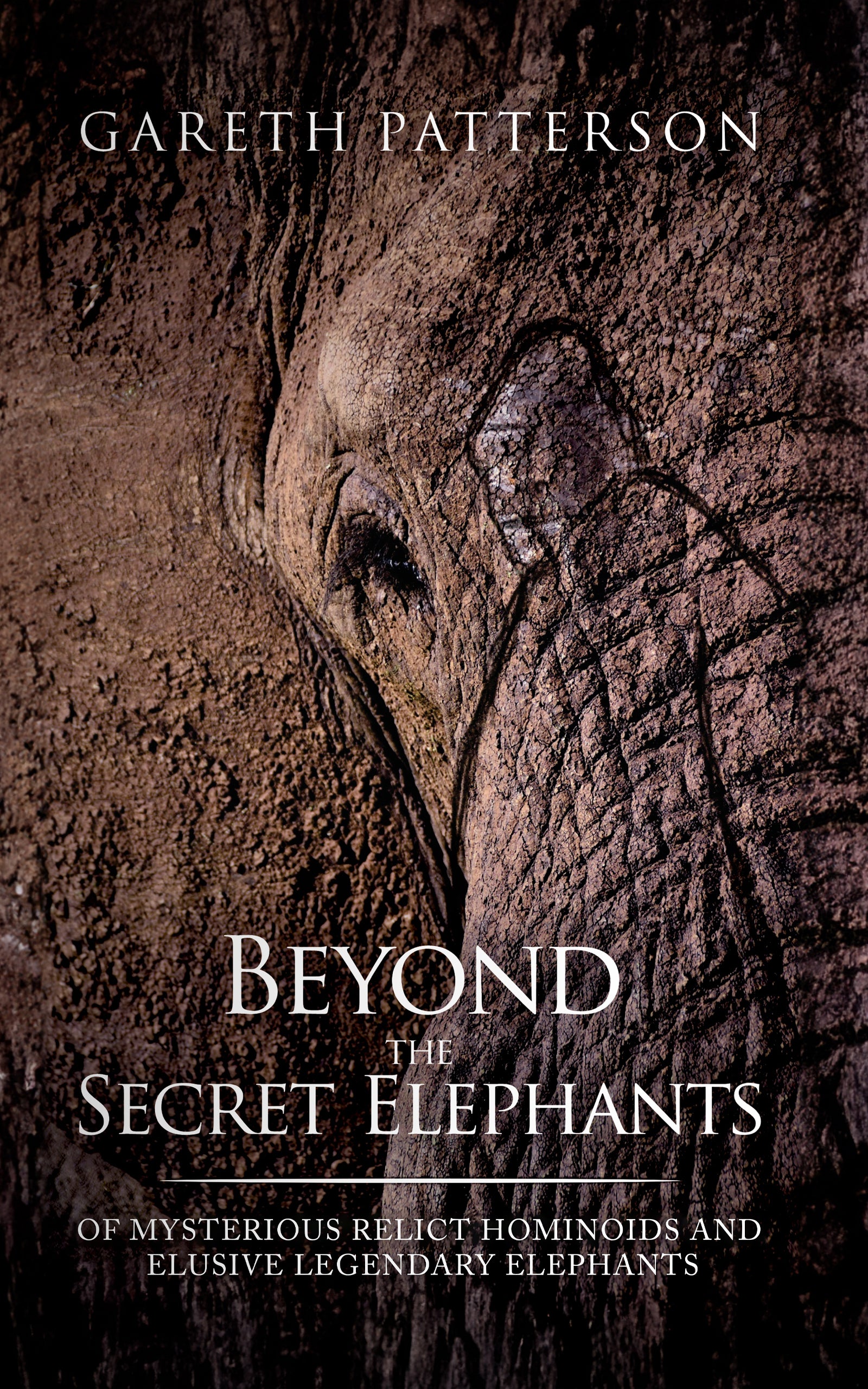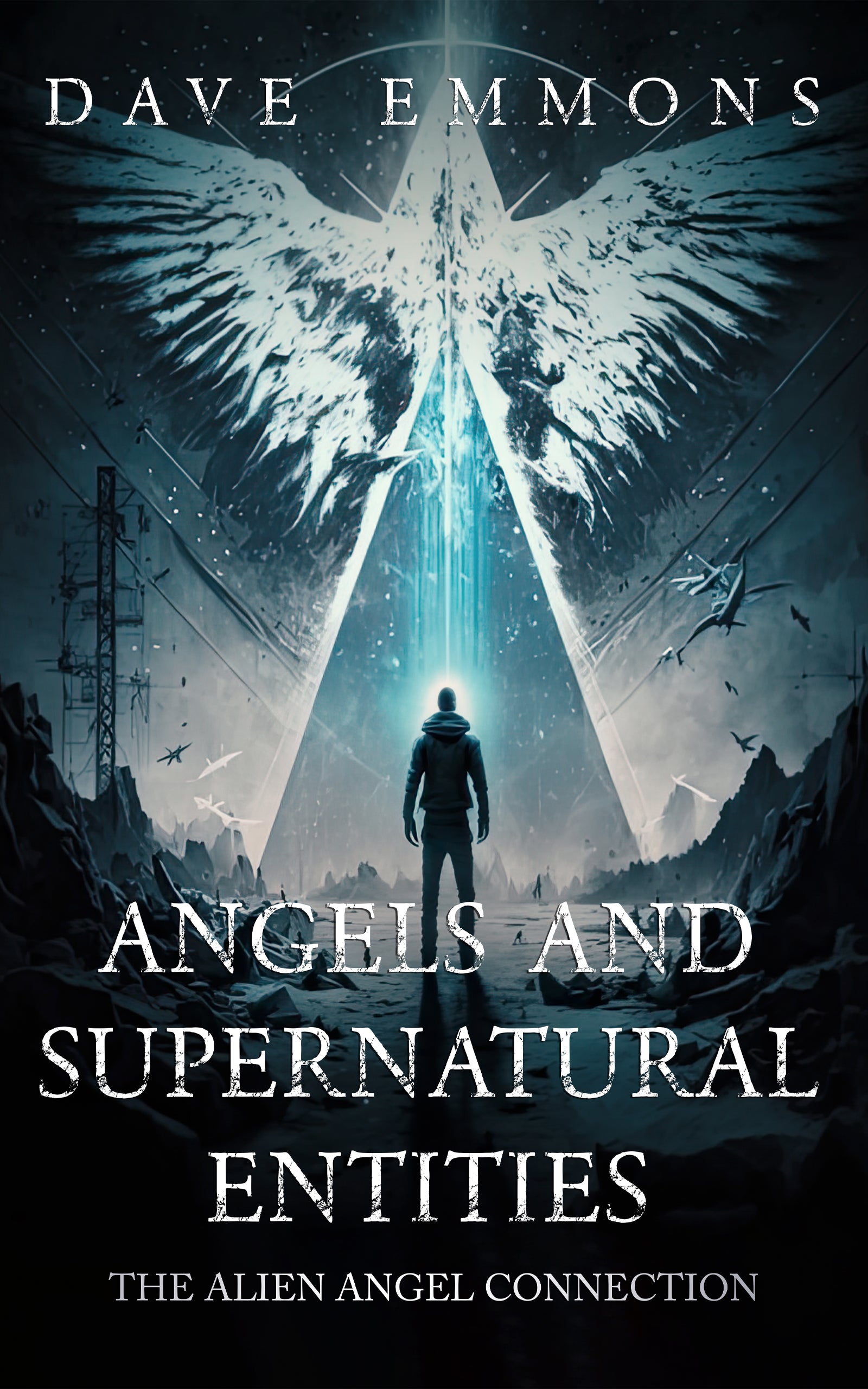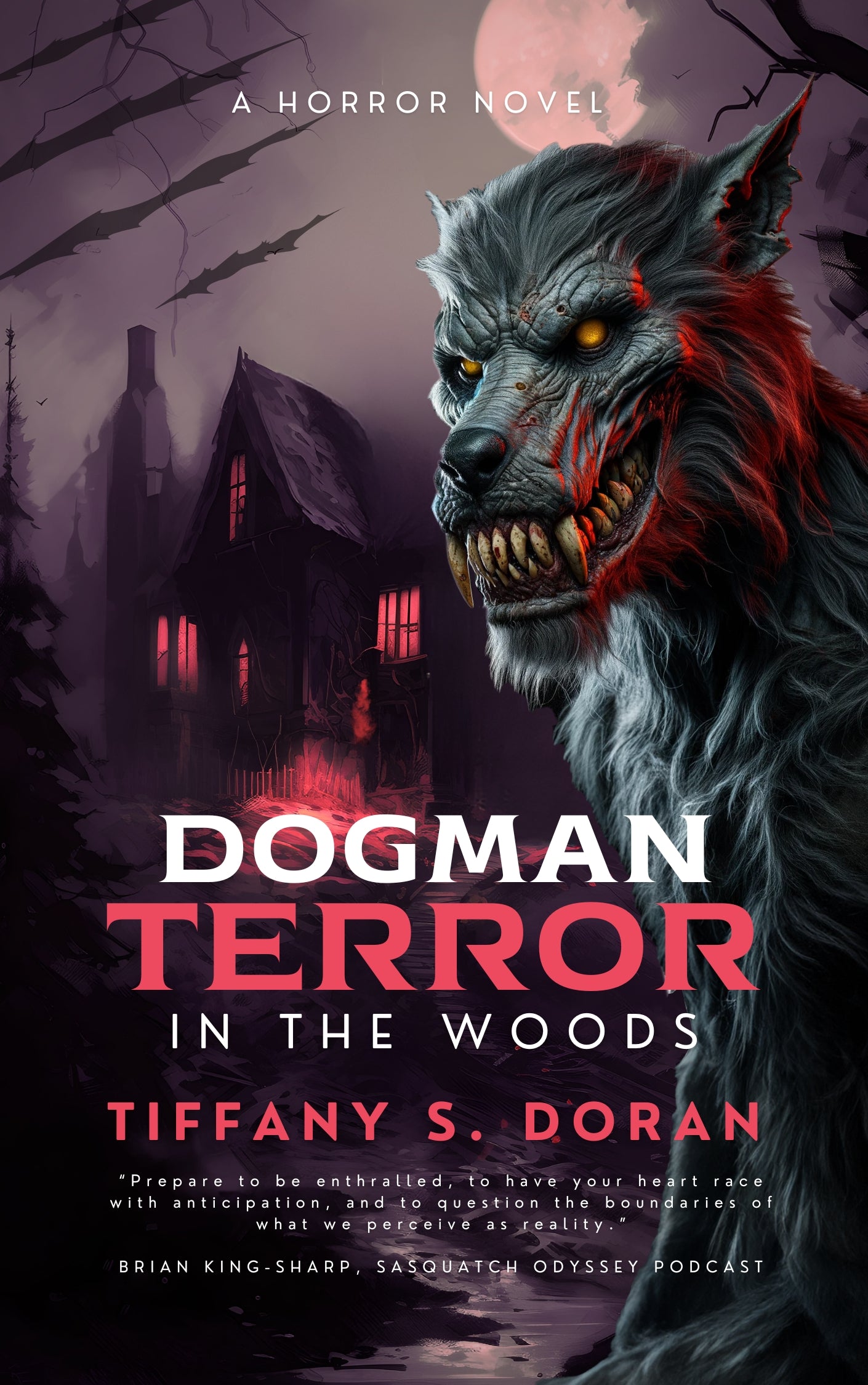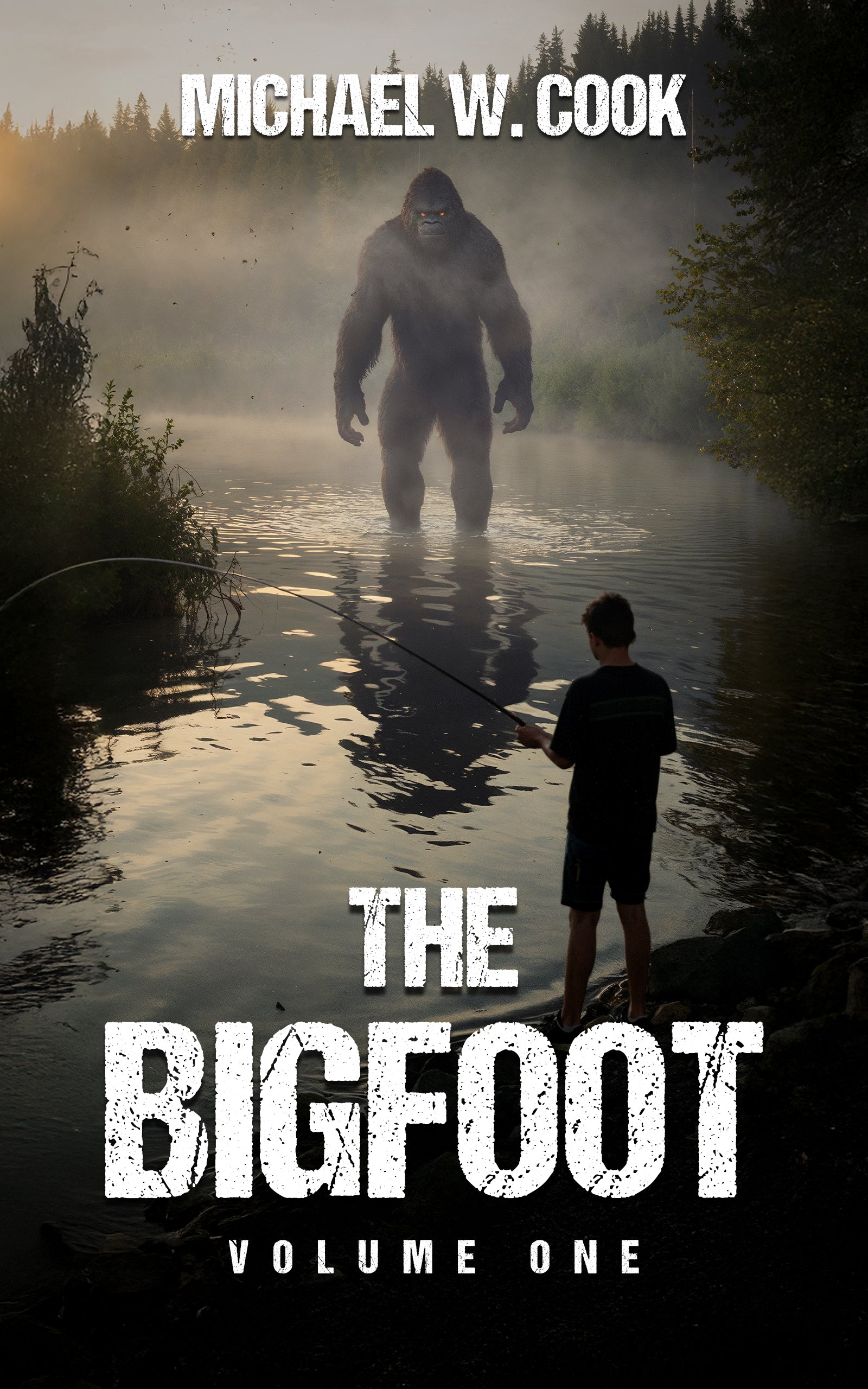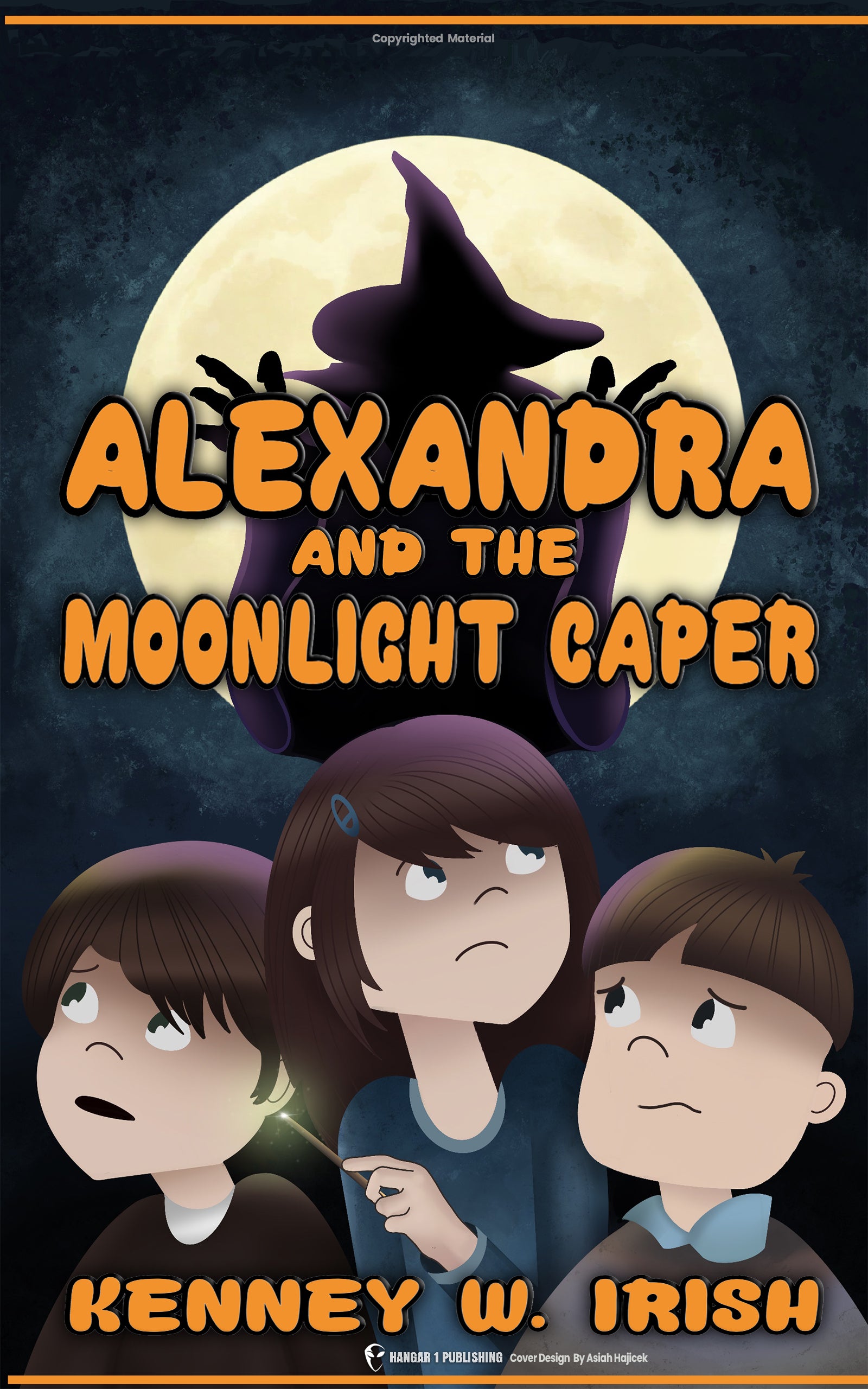Mothman Sightings: Red-Eyed Terror Across America
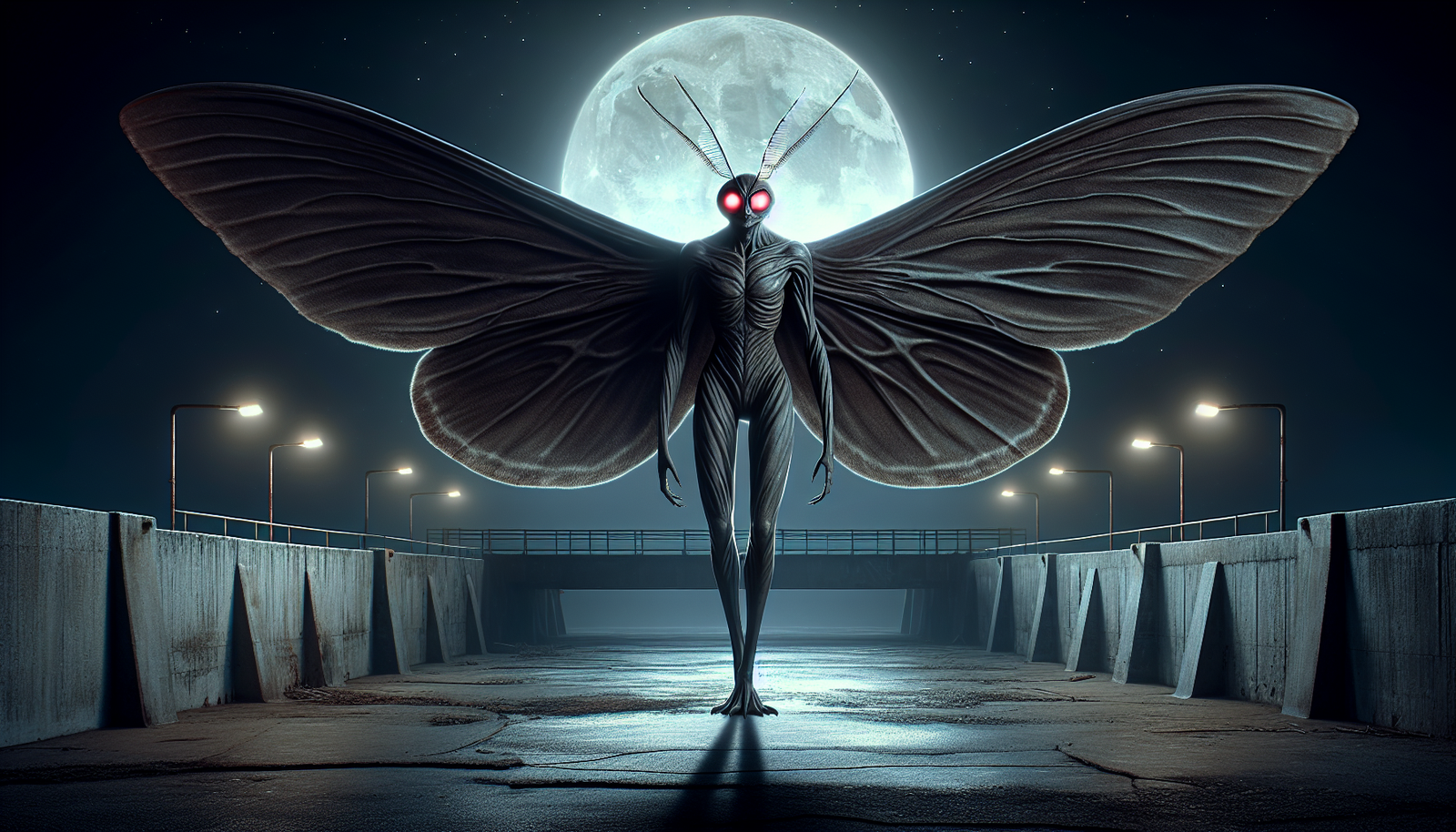
By Elaine Westfield, Ufologist
MOTHMAN SIGHTINGS: RED-EYED TERROR ACROSS AMERICAThe Shadow That Watches
Two young couples – Roger and Linda Scarberry, and Steve and Mary Mallette – were driving past an abandoned TNT plant near Point Pleasant, West Virginia on November 15, 1966. Their headlights swept across something that would forever change their lives and the small town's history: a tall gray figure, nearly seven feet in height, with glowing red eyes that shone "like bicycle reflectors." The entity had large wings folded against its back, but as they sped away in terror, those wings unfurled. The creature took to the sky, pursuing their vehicle at speeds exceeding 100 miles per hour. "That bird kept right up with us," Roger Scarberry would later report to police, his voice still shaking with fear.
This nightmarish encounter marked the beginning of what would become one of America's most enduring cryptid legends: Mothman. Unlike Bigfoot or the Jersey Devil, Mothman isn't just a mysterious creature lurking in remote wildernesses. The red-eyed entity represents something more complex – a potential harbinger of disaster, a warning from beyond normal reality, or perhaps a visitor from dimensions we barely comprehend.
What began as a local terror in West Virginia has evolved into a global phenomenon. Reports of similar winged, red-eyed humanoids continue to emerge from Chicago's urban sprawl, Latin America's remote villages, and even the sites of historical disasters like Chernobyl. Each sighting carries the same unmistakable markers: the glowing eyes, the overwhelming sense of dread, and the impossible speed and agility that defy conventional explanation.
Over half a century later, the question persists: What exactly is Mothman? Is it a misidentified bird, a mass hallucination, an interdimensional traveler, or something else entirely? And why does this particular cryptid continue to capture our collective imagination, transforming from feared monster to beloved mascot in some communities while still terrifying new witnesses across the globe?
Genesis of a Legend: Point Pleasant, 1966-1967
While the Scarberry-Mallette encounter launched Mothman into public consciousness, it wasn't actually the first sighting. Three days earlier, on November 12, 1966, five men digging a grave at a cemetery near Clendenin, West Virginia, reported seeing a "brown human being" lift off from nearby trees and fly directly over their heads. The men, busy with their solemn task, initially dismissed the bizarre sight and didn't report it until Mothman fever had already seized the region.
The TNT area where the two couples encountered Mothman was no ordinary locale. During World War II, it had served as a manufacturing and storage facility for munitions. By the 1960s, it had been abandoned, its concrete "igloos" and industrial structures reclaimed by nature. The area's isolation, combined with potential chemical contamination from its military past, would later figure prominently in theories attempting to explain the phenomenon.
After the couples' terrifying experience hit local headlines (with the newspaper dubbing the creature "Mothman" after a villain from the Batman TV series), sightings of the 'Mothman' continued for several years in and around the Point Pleasant area. On November 16, Marcella Bennett had perhaps the most traumatizing encounter. Visiting friends who lived near the TNT area, she stepped out of her car carrying her baby daughter when something rose from the ground nearby. "It rose up slowly," she later recalled. "A big gray thing. Bigger than a man with terrible glowing eyes." In her panic, Bennett dropped her child, quickly recovered her, and fled to her friends' house. The entity followed, peering through windows as the frightened occupants huddled inside.
Another disturbing incident occurred the same night as the original couples' sighting. Newell Partridge, a building contractor in Salem (about 90 miles from Point Pleasant), was watching television when the screen suddenly went dark and filled with a strange pattern. Simultaneously, he heard an unusual whining sound outside, "like a generator winding up." His dog, Bandit, began howling from the front porch.
When Partridge investigated, shining a flashlight toward his barn about 150 yards away, he spotted two red circles that resembled "bicycle reflectors." His dog charged toward the strange lights despite Partridge's commands to stop. Fear drove him back inside, where he slept with his gun nearby. By morning, Bandit had vanished, never to return.
What connects these seemingly separate events is a chilling detail: the Scarberry group reported seeing a large dog's body beside the road as they entered Point Pleasant that night. When they passed the same spot minutes later, the dog's remains had inexplicably disappeared. Many would later speculate that Partridge's dog had somehow been transported to Point Pleasant by the entity before vanishing entirely.
Throughout November and December 1966, sightings continued at a frantic pace. Thomas Ury reported the creature following his car on Route 62. Connie Carpenter encountered it while driving home from church, describing how it flew directly at her windshield. Sheriff's deputies, firefighters, and other respected community members added their accounts to the growing list of witnesses. By John Keel's estimation, at least 100 people personally witnessed the Mothman during this period.
Then came December 15, 1967. The Silver Bridge, which connected Point Pleasant to Gallipolis, Ohio, suddenly collapsed during rush hour traffic. Forty-six people plunged to their deaths in the icy Ohio River below. In the aftermath of this devastating tragedy, Mothman sightings around Point Pleasant mysteriously dwindled. Some locals began to wonder: Had the creature been trying to warn them all along?
Anatomy of the Unknown: Mothman's Physical Form
Across hundreds of sightings spanning decades and continents, witnesses have described Mothman with remarkable consistency. The entity typically stands between 6 and 7 feet tall with a wingspan of 10 to 15 feet. Its most distinctive and unsettling feature, mentioned in virtually every credible report, is its glowing red eyes – not simply reddish in color but luminous, often compared to "bicycle reflectors" or "red spotlights."
Curiously, many witnesses report that these eyes appear to be set directly into the creature's upper chest or shoulders, rather than in a distinct head. This unusual configuration contributes to one of Mothman's most recognizable characteristics: its apparent lack of a neck. When viewed head-on, the entity presents a distinctly non-human silhouette – broad-shouldered, with those piercing eyes positioned unnaturally high on its torso.
The coloration of Mothman varies somewhat between reports, though most describe it as gray or dark brown. Its skin texture is often characterized as leathery or feathery, with a slightly reflective quality in some accounts. Its wings appear more bat-like than bird-like, lacking the distinct feathered structure you'd expect in large avian species. When not in flight, witnesses report that Mothman keeps these wings folded tightly against its back, almost like a cape or cloak.
On the ground, the creature moves with an awkward, shuffling gait. Roger Scarberry described it as a "clumsy runner" during their initial encounter. But this earthbound clumsiness stands in stark contrast to its aerial capabilities. Unlike birds, which must flap to achieve lift, Mothman rises vertically with minimal wing movement – "like a helicopter," according to multiple accounts. Once airborne, it achieves extraordinary speeds, easily keeping pace with vehicles traveling over 100 miles per hour.
Some witnesses report hearing unusual sounds during their encounters – screeching noises "like squeaky brakes," high-pitched keening, or strange chirping or clicking sounds. Others describe their encounters as eerily silent, adding to the dreamlike quality of the experience.
These consistent physical characteristics have led many researchers to dismiss conventional explanations. The Sandhill crane theory, proposed by Dr. Robert L. Smith in 1966, fails to account for Mothman's reported size, the positioning of its eyes, its vertical takeoff capability, and its extraordinary speed. Similarly, the barred owl explanation, while accounting for the red eyeshine, cannot explain the creature's reported dimensions or flight characteristics.
No known animal matches all the attributes consistently reported by witnesses. This reality has pushed researchers toward more extraordinary explanations – from undiscovered species to supernatural entities to interdimensional visitors. Whatever Mothman may be, it appears to exist outside our conventional categories of flying creatures.
Minds Under Siege: The Psychological Impact
Perhaps the most distinctive aspect of Mothman encounters is the profound psychological impact on witnesses. Unlike sightings of other cryptids, which might elicit curiosity or even excitement, Mothman experiences consistently trigger extreme, paralyzing fear that seems disproportionate to the visual stimulus alone.
Witnesses frequently report an overwhelming sensation that the entity can "see through them" or "read their minds." A 19-year-old who encountered Mothman in Point Pleasant stated: "I felt like this thing could see right through me, read me, it knew what I was thinking, like it could stare right into my very soul. It was the most terrified I have ever been in my life."
This intrusive, mind-penetrating quality distinguishes Mothman terror from normal fear responses. Many witnesses report feeling temporarily paralyzed during their encounters – not merely frozen with fear, but physically unable to move or speak while in the creature's presence.
The psychological aftermath can be equally devastating. Marcella Bennett, whose encounter involved dropping her baby daughter in terror, required medical treatment for anxiety and remained traumatized for months. She reported being unable to sleep and feeling constantly watched, experiencing what modern psychologists would likely diagnose as post-traumatic stress disorder.
Similar patterns emerge across decades and geographical boundaries. Following a 1990 sighting in Chile, Federico Rojo Feria's colleague was so disturbed by their shared experience that he severed their friendship entirely. A 2019 witness in Monclova, Mexico reportedly suffered a complete nervous breakdown after their encounter.
These psychological impacts extend beyond primary witnesses to affect those close to them. Family members often report that witnesses are "never the same" after their experiences. Some become obsessively preoccupied with understanding what they saw, while others refuse to discuss the encounter at all, withdrawing from normal social interactions.
John Keel, who interviewed numerous witnesses firsthand during his investigation of the original Point Pleasant flap, noted that many showed signs of severe psychological distress long after their encounters. Some developed persistent sleep disturbances, experiencing nightmares featuring the red-eyed entity. Others became hypervigilant, afraid to go out after dark or visit locations resembling their encounter sites.
What makes this psychological impact particularly intriguing is its consistency across diverse witnesses – from hardened law enforcement officers to children, from rural Americans to urban Chileans. The intense fear appears to be an intrinsic component of the Mothman experience rather than simply a natural reaction to seeing something unusual.
This has led some researchers to speculate that the entity might emit some form of energy field or possess psychic abilities that directly affect human emotions. Others suggest the red eyes themselves might trigger primordial fear responses in the human brain. Whatever the mechanism, the psychological dimension of Mothman encounters remains one of its most distinctive and disturbing aspects.
Beyond West Virginia: Mothman's Global Footprint
While Point Pleasant represents Mothman's most famous haunt, the phenomenon has spread far beyond West Virginia's borders. In recent years, Chicago has emerged as America's most active Mothman hotspot, with over 161 documented sightings since 2011.
The Chicago sightings share many characteristics with the original Point Pleasant encounters, including descriptions of a tall, winged humanoid with glowing red eyes. However, some Chicago witnesses have reported variations in eye color, including yellow, orange, or green. The city's O'Hare International Airport has become a particular focus of activity, with multiple employees reporting encounters.
One of the most compelling Chicago cases occurred on August 21, 2017, during the solar eclipse. Witnesses at Northerly Island described hearing "a very loud scream" that "sounded like squeaky truck brakes" before spotting "a large object flying low over the docks." They described it as "a large black bat, but also had humanoid features such as pronounced arms and legs."
More recently, in September 2020, a U.S. Postal Service worker with 15 years of experience was walking to her car after her shift at the O'Hare sorting facility when she spotted what initially appeared to be a person in a long coat. As her car's headlights illuminated the figure, she realized it was something entirely different – a tall entity with glowing red eyes and large wings. It emitted chirping sounds followed by a screech before charging toward her and flying overhead as she fled.
Latin American Sightings
Across Latin America, similar entities have been reported under various names. In Mexico, "El Hombre Pájaro" (Bird Man) or "El Hombre Polilla" (Mothman) has been sighted around La Cueva de los Murciélagos (The Cave of Bats) near Monterrey. Local legend tells of a man named Don Pantaleon who encountered the creature while walking his dog. After throwing a rock in the direction of his barking dog, Don Pantaleon heard giant wings and witnessed a winged humanoid fly away.
Chile and Argentina have their own histories of Mothman-like encounters. In 1990, Federico Rojo Feria and a coworker spotted a flying humanoid while on the 19th floor of a building in Santiago, Chile. Both men reported feeling paralyzed with fear. In 2015, residents of Quilino, Argentina, reported a winged humanoid appearing in their village at night. Days later, a fireman and police officer encountered a hooded figure that flew away, leaving them visibly shaken.
Disaster Connections Worldwide
Perhaps most intriguing are the global sightings associated with disasters. Before the 1986 Chernobyl nuclear disaster, workers and residents reportedly saw a large, dark creature with glowing red eyes near the power plant – a phenomenon later dubbed "The Blackbird of Chernobyl." Similar sightings were reported in Moscow before the 1999 Russian apartment bombings, in New York City before the 9/11 attacks, and in Minneapolis before the 2007 collapse of the Interstate 35W bridge.
These global patterns suggest several possibilities: Mothman might be a single entity capable of traveling worldwide, multiple creatures of the same species might exist in different regions, or similar psychological and perceptual phenomena might manifest independently across cultures. Whatever the explanation, the consistent reports from diverse witnesses across continents indicate that the Mothman phenomenon transcends cultural and geographical boundaries.
From Monster to Mascot: Cultural Transformation
The small river town of Point Pleasant has undergone a remarkable transformation since the terrifying encounters of the 1960s. What began as a frightening local phenomenon has evolved into a cultural touchstone that draws thousands of visitors annually and shapes how the town perceives itself.
Initially, many residents were terrified by the reports, keeping their children indoors at night and forming armed search parties to hunt the creature. The subsequent Silver Bridge tragedy cast a pall over the community, and for years, discussion of Mothman was often linked to that painful chapter in the town's history.
However, beginning in the 1990s and accelerating after the 2002 release of "The Mothman Prophecies" film, Point Pleasant began to embrace its unusual claim to fame. In 2003, a 12-foot stainless steel Mothman statue created by artist Bob Roach was unveiled in the downtown area. This imposing sculpture, with its massive wings and glowing red eyes, quickly became the town's most photographed landmark.
Jeff Wamsley, a Point Pleasant native who grew up hearing Mothman stories (his father worked at the National Guard Armory), opened the world's only Mothman Museum in 2005. The museum displays original police reports, newspaper articles, and witness accounts, along with props from the movie and an extensive collection of Mothman memorabilia.
Perhaps most significantly, in 2002, Wamsley and Carolyn Harris launched the annual Mothman Festival. What began as a small gathering of a few hundred curious visitors has grown into an event that draws over 15,000 people to a town of fewer than 5,000 residents. The festival includes a Mothman 5K race, guest speakers, vendor booths, and even a Mothman beauty pageant where contestants incorporate wings into their attire and learn the "Mothman dance."
"Moff Man he's not from Japan, he's genuine America," goes one line from the choreographed routine, as reported by a former pageant contestant.
Local entrepreneurs have developed numerous Mothman-themed products, from T-shirts and souvenirs to coffee and baked goods. The town's cafés offer "Mothman cookies," and gift shops sell plush Mothman toys, often purchased by visiting children.
As one local business owner noted, "It's a good thing. It brings lots of people to the area. He's here to stay." Another resident commented, "Whether you believe in the Mothman or not, it's done a lot for Point Pleasant."
Perhaps most intriguingly, Mothman has transformed from a feared entity to a beloved community mascot. While the original witnesses experienced terror during their encounters, today's Point Pleasant embraces Mothman with affection and pride. It's a remarkable reversal – imagine if the people of Amity Island from "Jaws" had eventually started selling plush sharks and hosting a "Great White Festival."
According to Rosemary Hathaway, an associate professor at West Virginia University, the revival of interest in cryptids like Mothman represents a "renaissance" that carries particular importance for communities like those in West Virginia, which have historically been defined by outsiders primarily through stereotypes related to extraction industries.
"If they do know about West Virginia, they tend to have stereotypes: Cletus the Slack-Jawed Yokel and a miner," Hathaway observes. By introducing their legendary creatures to outsiders, communities create "an advantageous grab for financial gain and invented a new way to educate and engage tourists."
Beyond Point Pleasant, Mothman has established a significant presence in popular culture. The creature has been featured in numerous books, documentaries, television shows, films, and video games. In recent years, Mothman has experienced a resurgence in popularity, particularly among younger audiences drawn to cryptid folklore. Internet memes, TikTok videos, and online cryptid communities have embraced Mothman as a subject of both serious interest and humorous affection.
The transformation of Mothman from a terrifying enigma to a celebrated cultural icon demonstrates the complex ways in which unexplained phenomena can shape community identity, economic development, and collective narrative. What began as frightening encounters on dark country roads has evolved into a phenomenon that brings people together, sparks imagination, and provides a unique sense of place for communities associated with the legendary creature.
Red Eyes in the Darkness: What Mothman Might Be
The persistent nature of Mothman sightings across time and geography has generated numerous theories attempting to explain this phenomenon. These range from conventional zoological explanations to supernatural interpretations, each with varying degrees of plausibility.
Misidentified Animals
Skeptics often point to misidentification of known animals, particularly large birds. Dr. Robert L. Smith, a wildlife biologist at West Virginia University, proposed in 1966 that witnesses were likely seeing a Sandhill Crane—a large bird with a wingspan of up to seven feet that stands nearly as tall as a man. The Sandhill Crane has patches of reddish skin around its eyes that could appear to glow when reflecting light.
However, this explanation has significant weaknesses. Sandhill Cranes are not native to West Virginia, and their distinctive long neck contradicts the neckless appearance consistently described by Mothman witnesses. Additionally, no crane could fly at the speeds reported (over 100 mph) or exhibit the vertical takeoff capability attributed to Mothman.
Another proposed candidate is the Barred Owl, which has a rounded head and black eyes with a crimson eyeshine. Barred Owls are native to the McClintic Wildlife Management Area (formerly the TNT area) where many Mothman sightings occurred. Proponents of this theory argue that witnesses misjudged the owl's size and distance in the darkness, making it appear much larger than its actual 17-20 inch height.
The owl theory better accounts for the glowing red eyes, as Barred Owls have a particularly dramatic crimson eyeshine due to blood vessels around the eye. However, it struggles to explain other consistent aspects of Mothman reports, such as the humanoid body structure, large wingspan, and extraordinary speed.
Undiscovered Species
Some researchers propose that Mothman represents an undiscovered species—a genuine cryptid that has somehow evaded scientific classification. Proponents point to the relative consistency of descriptions across unrelated witnesses and the creature's apparent intelligence and awareness of human observers. They argue that certain remote areas, such as the abandoned TNT complex, could potentially harbor unknown species that remain largely hidden from human detection.
Interdimensional Entity
Some have speculated that Mothman might originate from dimensions or realities beyond our own. John Keel developed complex theories proposing that Mothman, UFOs, and other paranormal phenomena might originate from interdimensional sources rather than extraterrestrial ones.
"I have long theorized that the Mothman, and other unknown winged beings, are multidimensional lifeforms... that can be summoned by high-energy incorporeal entities that reside on our Earth plane," Keel wrote.
This interpretation views Mothman as a kind of entity that can move between dimensions or realities, manifesting in our world under certain conditions. Its apparent precognitive abilities regarding disasters would align with an existence not bound by linear time.
Environmental Factors
Some researchers have explored whether environmental factors in the TNT area might have contributed to the original Mothman sightings. The abandoned munitions plant potentially contained chemical contaminants that could have affected local wildlife or even human perception.
One commentator noted: "In the 60s they had very bad a very poor or it was just neglect in their disposal of some of the byproducts of that TNT Factory so it got into the aquifer the aquifer is the main water source and they would have used it and even though they may have had purification processes which I'm sure got gets out a lot of the pollutants and carcinogens and what have you some of it may have gotten through and may have caused a hallucinogenic effect."
Harbinger of Disaster
Perhaps the most culturally significant theory portrays Mothman as a harbinger or warning entity that appears before disasters. This interpretation gained prominence after the Silver Bridge collapse and has been reinforced by alleged sightings before other tragedies like Chernobyl and 9/11.
This theory exists in several variations. Some view Mothman as a benevolent entity attempting to warn humans of impending danger. Others see it as a more sinister force somehow connected to or even causing the disasters it precedes.
Each of these theories offers partial explanations for the Mothman phenomenon, but none fully accounts for all aspects of the reported encounters. The enduring mystery surrounding these sightings continues to fascinate both believers and skeptics, ensuring that Mothman remains one of America's most compelling cryptids.
Whether Mothman is a misidentified animal, an interdimensional visitor, a hallucination, or something else entirely, the red-eyed entity has secured its place in both folklore and the modern imagination. Like all great mysteries, it continues to elude definitive explanation – challenging our understanding of reality and leaving us to wonder what might be watching from the darkness with those glowing red eyes.
From Bigfoot to UFOs: Hangar 1 Publishing Has You Covered!
Explore Untold Stories: Venture into the world of UFOs, cryptids, Bigfoot, and beyond. Every story is a journey into the extraordinary.
Immersive Book Technology: Experience real videos, sights, and sounds within our books. Its not just reading; its an adventure.





